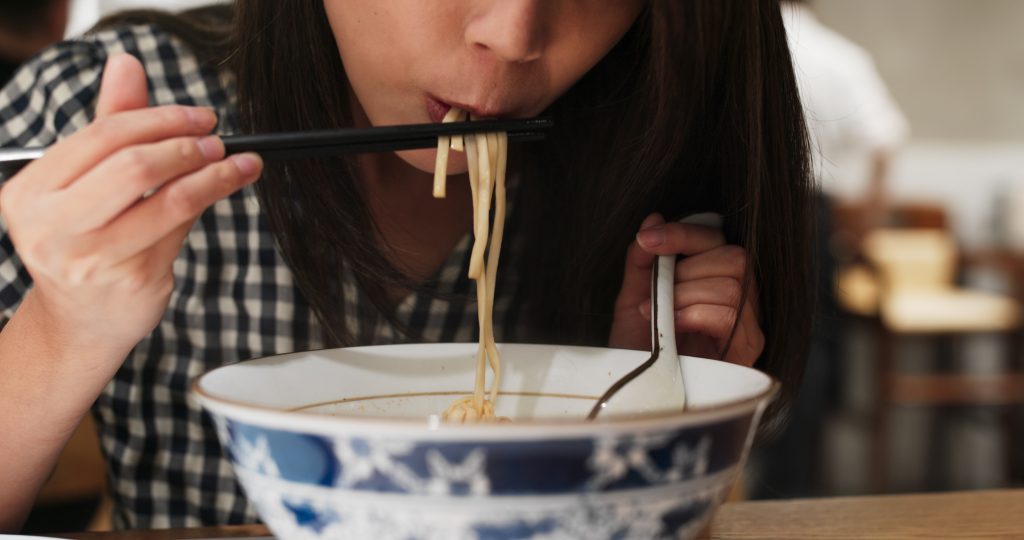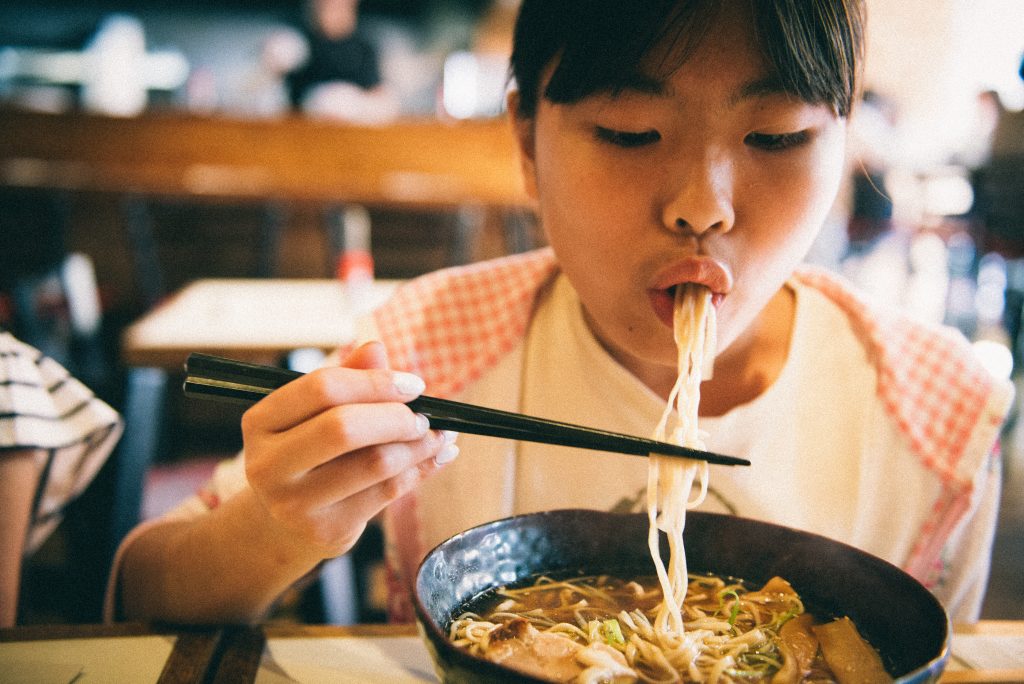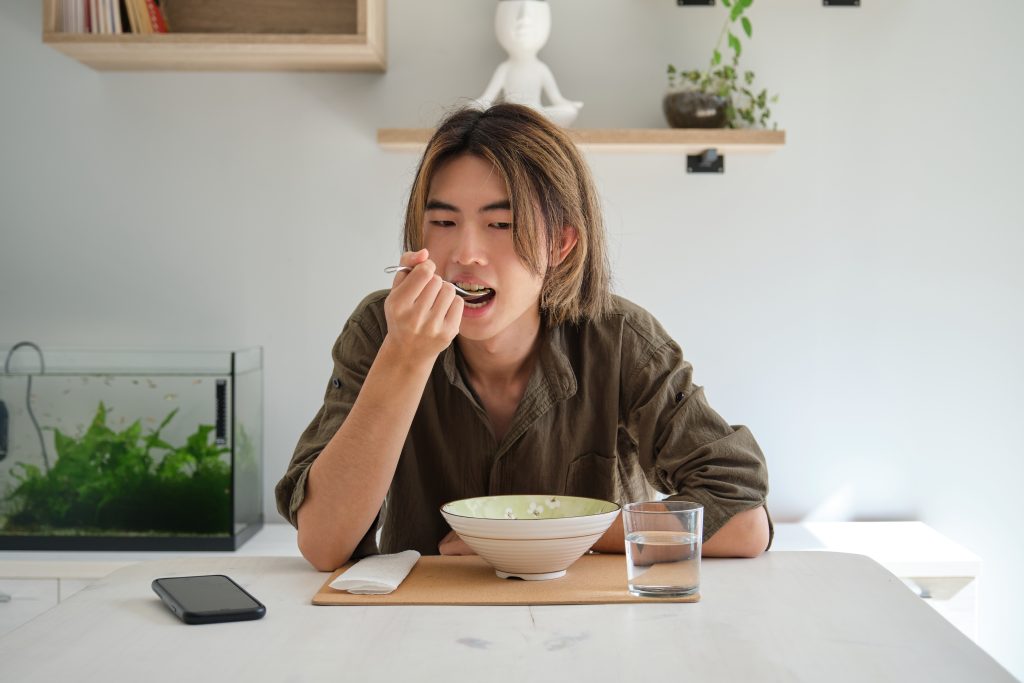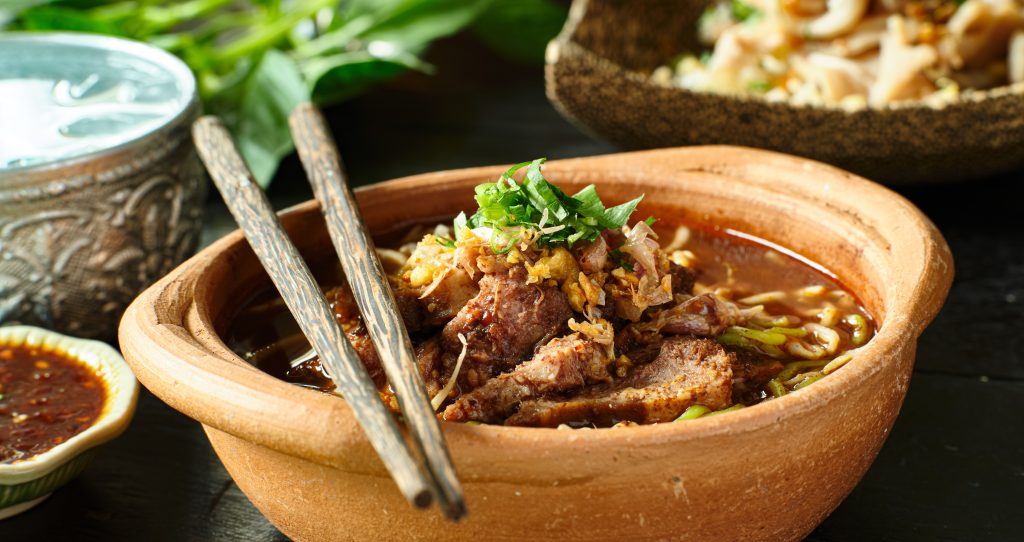Noodle soup etiquette can turn out to be complex for the novice, from condiment concerns to chopstick strategies. People are eager to sample all the different pasta and noodle kinds that the world has to offer, from rich bowls of Japanese or Korean ramen to plates stuffed full of Italian spaghetti pasta.

Noodle etiquette differs from location to region, so it’s important to be aware of cultural standards, in general, to make sure you treat the cuisine you’ve been invited to eat with respect and not be rude about it.
Noodle Etiquettes In Different Parts Of The World
Japan
Your eating tendencies will be welcomed in Japan if you slurp to demonstrate how much you appreciate your meal. Seriously. If you’re enjoying a soupy noodle meal, slurp your ramen loudly and, if you can, attempt to empty every last bit of liquid from the bowl. Use chopsticks for this.
In some cultures, it makes sense to leave noodles or broth on your plate so you don’t appear gluttonous, but in Japanese culture, it’s bad manners. Giving the chef the freedom to prepare anything they wish for you is an honour. Therefore, leaving food on the plate unfinished is considered impolite and wasteful. This is a fantastic excuse to only order what you know you can consume.
China
Chopsticks are used to pick up noodles in China as is typical, but if one wants to blend in, omit the intricate twirling. You are more than welcome to slurp your noodles in China but avoid chopping them.
Italy
It takes some practice, but one should use a fork to separate a spaghetti strand from the rest. The next step is to spin them around your fork while attempting to prevent any from dangling. This is how spaghetti should be consumed in a restaurant.
Hold the fork in your right hand and the spoon in your left hand at home and in less formal situations, such as during a friend’s dinner party. Only a small amount of spaghetti needs to be taken with the fork, placed on the spoon, and then swirled. Getting this right and making sure the spaghetti is neatly wrapped around the fork takes some practice.
Correct Table Manners For Eating Noodles
If you don’t want to be the odd one out and to blend in with others while being at a party serving noodles, you must follow the below-mentioned manners.
Slurping
Consuming noodles give the noodles a reasonable amount of air exposure before eating to help the heated noodles cool off more quickly.
This is a great method to consume ramen quickly without sacrificing its flavour.

The slurp aerates the noodles, enhancing their flavour in every mouthful, and the scented vapour between the dish and your face provides an additional dimension to the hot soupy noodles-eating sensory experience.
You might struggle the first time you try to vacuum up noodles because it can feel pretty strange. While slurping is not a typical activity you could perform with other solid items like sandwiches, it is possible with noodles.
Chopsticks
Chopsticks are only utilized for eating noodles in Thailand. The remainder is consumed using spoons and forks. Noodles are almost served and devoured with forks and spoons in Singapore, India, and Malaysia.
Pull a few noodles out of the bowl with your chopsticks, dunk these delicacies again into the soup to absorb some of the liquid and fat, and then rapidly take the noodles and slurp them into your mouth.
Move straight over the bowl of soup to minimize exposure to make this work, and avoid getting plenty of soup stains on your clothes.
Add The Correct Toppings
Sip a few spoonsful of the soup in the noodles first before adding extra toppings or condiments. But if anything, it lets the chef know that you’ve tried the authentic flavours of their dish. After that, gradually add the sauces. If you use too much, you run the risk of covering up the delicious flavours of a well-made dish.
Some people go from bite to bite, while others, like Orkin, eat the toppings all at once. After taking a sip of the soup, slurp some noodles, then try a bite of a topping, then take another sip of soup, and so on.
How To Drink The Soup
It is advised to take a sip of the soup just before setting off so that you can completely appreciate the dish’s depth of flavour. You are welcome to sip the broth straight from the bowl. It’s seen as praise for how flavorful the broth is. But consume it at your own risk—those broths are salt bombs with tons of flavour. If you’ve consumed all of the noodles in your bowl, it’s also fine to ask for more to accompany your soup.

Don’t Be In A Rush
It can be tempting to only bite the noodles midway before letting them slip back into your bowl when you run out of slurping juice. This is a hazardous action since, in addition to being a little nasty, you risk pouring delectable but stain-causing ramen soup on other people or yourself.
If this occurs, you can use the spoon to collect the noodles. Always begin with modest servings of noodles and build up your skill before perfecting the correct technique.
Enjoy Your Noodles
Noodles are an incredibly personal cuisine, whether it’s a chef trying out new ingredients, a stall vendor selling bowls of noodles all over the neighbourhood, or you at home cooking your favourite comfort food. You must take pleasure in the treat and eat slowly.

Know Your Noodles Before Ordering Them
Noodles are the foundation of many Asian speciality foods in all their varied shapes, colours, and textures. There are around eight different varieties of noodles; you can choose from the round, flat, or thread varieties that are offered in the market.
While some Asian cuisines call for specific kinds of noodles to achieve the right mix of flavour and texture, others are more flexible. Knowing the many varieties of noodles will prevent you from ordering one that you end up disliking.
Most Popular Types Of Noodles
Egg Noodles
Egg noodles, also known as E-fu noodles, are frequently used in Asian cuisines and are prepared with eggs, wheat, as well as water. Egg noodles are suitable for use in a broad variety of recipes, including soups, salads, and main courses. They are available in several shapes, including broad, thin, fresh, dried, flat, and round. Egg noodles may be prepared quickly and easily by simply boiling the noodles first.
Ramen
The long, curly ramen noodles, which are the Japanese version of egg noodles, are produced from egg and wheat and then dried to resemble bricks. When not in use, ramen noodles are kept in the refrigerator. Additionally, they must be consumed right away after being boiled.
Udon Noodles
Udon noodles, a staple in Japan, are formed with flour, water, and salt. Wheat flour is used to make the udon noodles. The noodles, which come in a variety of sizes and forms, are boiled in boiling water first. Depending on your preference, one can use dried, instant, pre-cooked, or shrink-wrapped options. However, freshly made udon noodles taste much better and are typically used in soups.
Wrapping Up
Noodles are one of the most widely consumed dishes. Its preparation may differ from region to region but there are certain etiquettes attached to eating them. If you’re at your home in your own space, then you can eat noodles however you like, but when you’re in a social or formal gathering, it is advised to follow some table manners.



